Dark abyss mystery: What’s inside a black hole?
24th Sep 2023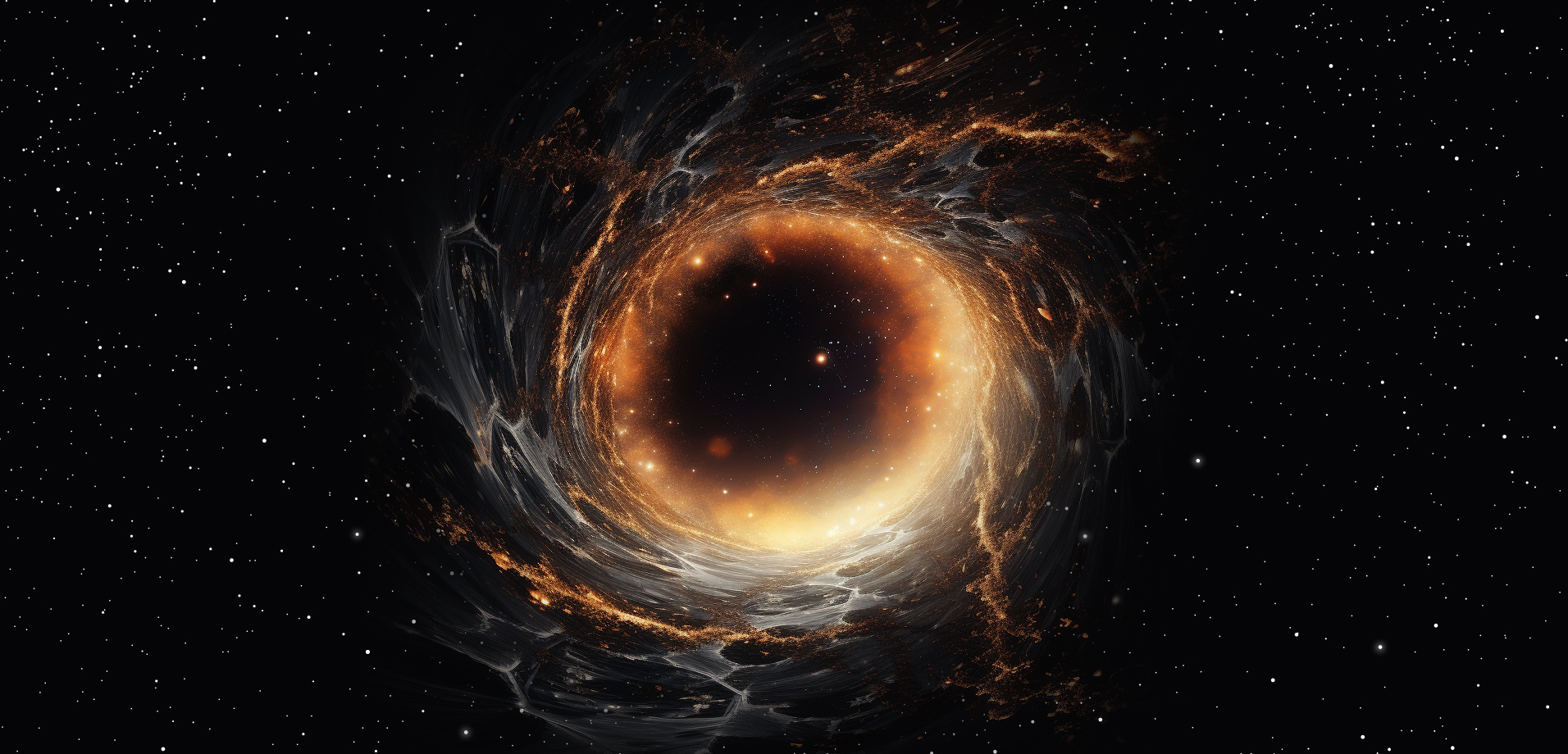
We’ve all heard of the mysterious black holes in space, but so far, our understanding of them seems as dark as they are. What is inside a black hole, and does that put us in danger? Let’s find out everything that scientists know at the moment about these unique phenomena in the Universe and what hypotheses the scientific community builds around them.
Who Discovered Black Holes?
In 1783, the English clergyman and natural philosopher John Michell wrote a letter to the Royal Society of London in which he proposed the idea of “dark stars”. He suggested that there could be objects so massive and dense that their escape velocity exceeds the speed of light, making them invisible.
In 1916, the German physicist and astronomer Karl Schwarzschild first tried to scientifically substantiate the theory of black hole existence. He found a solution to Einstein’s general theory of relativity, which described a region of space-time where gravity was so strong that not even light could escape it. Today we call this area a black hole. However, this term, common for us today, was introduced much later by the American physicist John Archibald Wheeler in the middle of the 20th century.
The concept of black holes can be traced in the work of many physicists and astronomers. By studying the behaviour of stars, scientists have seen that some move in a seemingly incomprehensible way. They make sharp loops as if some massive body is forcing them to change their orbit. Such a body must be huge and heavy. But the problem is that it is not visible.
How is a Black Hole Formed?
This unique phenomenon is formed as a result of a process called gravitational collapse. It occurs when a star reaches the end of its life cycle and can no longer resist its own gravitational pull. As a star ages, its nuclear fuel is eventually depleted. At this stage, the external pressure from nuclear fusion decreases, and the force of gravity begins to dominate.
In the absence of an opposite pressure, the core of the star begins to collapse under the influence of gravity. The collapse of the core is fast and can lead to a supernova explosion, which ejects the outer layers of the star into space. Prof. Subrahmanyan Chandrasekhar was the first to calculate that when a massive star burns up all its fuel, it will collapse.
After a supernova explosion, whatever is left of the core can turn into an incredibly dense region called a singularity. Black hole singularity is a point of infinite density where the laws of physics as we commonly know them don’t work.
A region around the singularity is called the event horizon. This is the boundary beyond which anything that gets there cannot escape the gravitational pull of the singularity, not even light. So how are black holes created? When the singularity is within the event horizon, it turns into a black hole. By the way, this phenomenon has its opposite — white holes.
Read also:
White holes in space: what are they?
What are black holes made of?
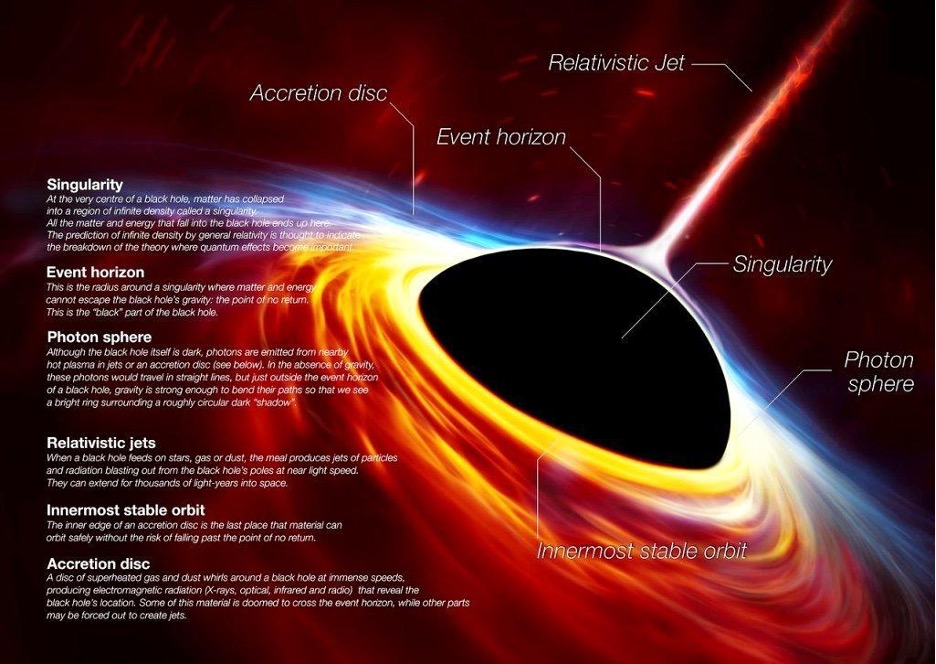
So, a black hole is a singularity formed from the core of a dead star and surrounded by an event horizon. Near the event horizon, a region of radiation known as an “accretion disk” can form from matter that is falling into a black hole.
Black hole gravity is so great that everything shrinks into a point, although according to Einstein, matter should not disappear without a release of energy. But it disappears, so his theory is not quite suitable for explaining the phenomenon.
If we apply the loop quantum gravity theory, which was pioneered in the 1980s by the theoretical physicists Abey Ashtekar, Lee Smolin, and Carlo Rovelli, then there should be a “Planck star” inside a black hole, not a black hole singularity. That is, matter will not disappear, but will continue to shrink to a size many billion times smaller than an atom, after which the reverse expansion process will begin. Another theory suggests that the center contains the so-called vacuum energy ─ a form of dark energy. Such an assumption was put forward by the International group of physicists at the University of Hawaii, Imperial College London and RAL Space, which studied several supermassive black holes.
How big is a black hole?
The size of a black hole depends on several factors, including the mass of matter left after a supernova explosion. There are three main types of these cosmic phenomena according to their mass:
- star-sized black holes (formed as a result of massive stars collapse), relatively small, with a mass usually several times greater than the mass of our Sun;
- intermediate (with a mass between star-sized and supermassive black holes);
- Supermassive black holes are found at the centres of most galaxies and are thought to have formed through a variety of mechanisms, including massive gas clouds and mergers of smaller black holes.
Supermassive black holes can be quite huge. For example, the one in the center of galaxy Messier 87 in the constellation Virgo is about 6 billion times heavier than the Sun.
How are black holes detected?
They are usually detected by their interaction with the surrounding matter and by the emission of various radiation types:
X-ray radiation
Black holes actively accreting matter from their surroundings can emit X-rays. As matter spirals into the black hole, it heats up and emits high-energy X-rays before disappearing beyond the event horizon. X-ray telescopes in space, such as NASA’s Chandra Observatory, can detect and study these emissions, providing valuable information about the presence and properties of these unique phenomena.
Gravitational effects
Black holes have a powerful gravitational effect on nearby objects, including stars and gas clouds. When a black hole is in a binary with a visible star, its gravitational pull can cause the companion star to eject matter. This matter forms an accretion disk around the hole and emits X-rays and other radiation, as discussed above. In addition, one can observe the movement of stars or gas clouds near a massive invisible object, which indirectly indicates the presence of such a unique phenomenon.
Gravitational waves
In 2015, gravitational waves were directly detected for the first time by the Laser Interferometer Gravitational Wave Observatory (LIGO). Gravitational waves are ripples in space caused by high-energy events, such as the merger of two black holes. By detecting these waves, scientists can infer their presence and study their properties.
Indirect observations
Sometimes the presence of black holes can be indirectly concluded by observing their impact on the environment. For example, the observation of particle jets moving at relativistic speeds from a compact region of space may indicate such a presence.
By the way, scientists have learned not only to detect black holes but also to listen to them. Don’t believe it? Listen to this eerie black hole sound recorded by NASA in August 2022.
Does time exist in a black hole?
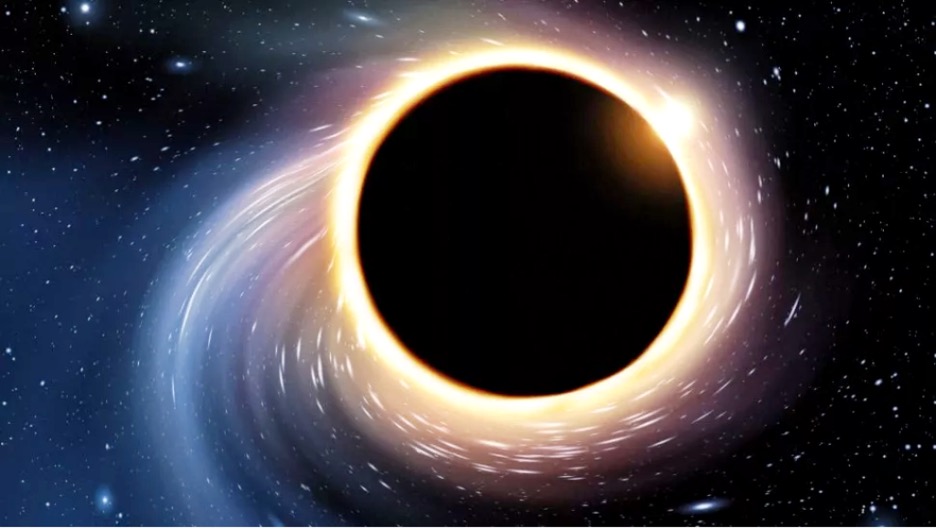
Based on Einstein’s general theory of relativity, time does exist there, but its perception is highly distorted due to gravitational effects. As you get closer to the event horizon, the black hole’s gravity becomes very strong. This extreme gravitational collapse causes a significant slow-down of time, which manifests itself in the phenomenon of time dilation. Time dilation, according to Einstein’s theory of relativity, means that time slows down compared to observers in different conditions.
Does time stop in a black hole?
To an observer far from the black hole, what is happening inside it will seem very slow. If, for example, we observe an object falling into it, then it will appear stationary on the event horizon, and it will take an infinite time for it to cross it. In other words, for an external observer, everything that gets inside will forever travel inside a black hole. But an observer falling into one will experience time as usual.
How long is 1 minute in a black hole?
The exact rate of time dilation depends on the mass and properties of the black ‘chasm,’ as well as the distance to its centre (which also depends on the position of the object inside the black mystery).
Suppose a black hole has a certain mass and properties that cause time at its event horizon to slow down by a factor of 10. If an external observer measures 1 minute, then for someone who falls into the black hole, only 6 seconds will pass. As we get closer to the singularity at the centre of the black ‘neighbour,’ time dilation will become even more extreme.
It is important to emphasize that these scenarios are hypothetical because black holes explained by theoretical physics have no real measurements. The behaviour of time and space inside this black phenomenon is an open question for scientists, requiring a deeper understanding of quantum gravity.
Can you see the future in a black hole?
According to our current understanding of physics, it is impossible to see the future inside a black hole. The singularity at its centre is a point of infinite density and curvature at which the laws of physics known to us break down.
Time and space there are so curved that the traditional concepts of past, present, and future lose their meaning. This suggests that black holes do not provide the ability to “see the future” or predict events beyond the event horizon. In any case, it is impossible to prove the opposite in a practical way because even assuming that we manage to get inside it, we won’t be able to get back and tell what we saw there.
Can anything escape a black hole?
The matter near the black hole will be absorbed, and its particles near the event horizon will reach the speed of light. This means that neither matter nor radiation, once on the other side, can never return.
No one knows where do black holes take you, but trying to get out of there is hopeless. Tidal forces reach infinity at the singularity. The last frontier where escape is possible is the event horizon, the furthest point from which light can break through.
Are we inside a black hole?
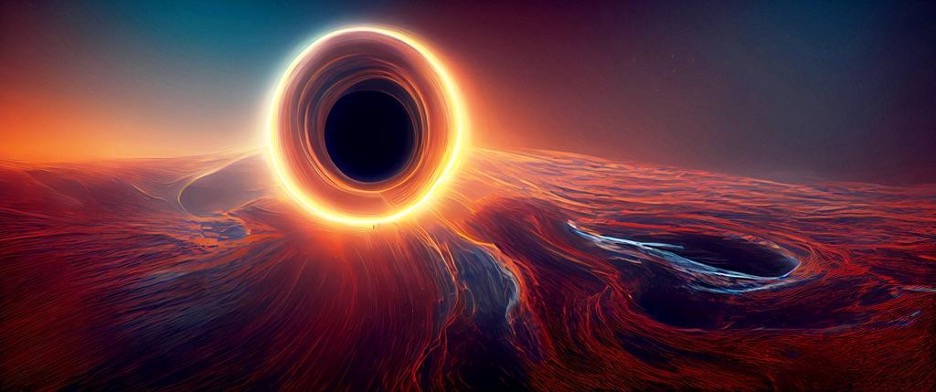
The hypothesis that we are inside a large black hole has a completely scientific justification. It was proposed in 1972 by physicist Raj Pathria and mathematician Irving Good. Its essence is to compare some of the characteristics and features of our Universe and black holes. According to their calculations, with the same size, they should have the same mass.
Although theoretically, life inside a black hole does not exist, the Big Bang theory says that our Universe was also born from a singularity. It also has its own inaccessible limit ─ the cosmological horizon. And it also does not seem realistic for us to leave it.
Also, according to the original version of the Pathria-Good hypothesis, our Universe is a black hole, which is located in another, even larger Universe. And it was formed from a four-dimensional star in four-dimensional space. That’s it. But do not forget that this is just a hypothesis.
Can a black hole explode
A black hole can “explode” in a process known as “black hole evaporation”. This phenomenon is described by the theoretical concept of “Hawking radiation” proposed by the British physicist Stephen Hawking in the 1970s.
How do black holes work according to Hawking radiation? They emit a faint glow of thermal radiation due to quantum effects near the event horizon. This radiation is created by virtual particle-antiparticle pairs that are continuously created and annihilated just beyond the event horizon. In some cases, one of the particles in a pair can fall into the black hole while another escapes, carrying away energy and causing the black hole to lose mass. As a result of this process, over a very long time, the black hole gradually loses mass and energy and, eventually, “evaporates”.
But if we imagine the death of a black hole as a sudden explosion, it will be marked by the release of energy equal to that released during the explosion of several trillion TNT tonnes. Everything that has been absorbed by it during its existence will be “processed” into pure energy and splashed out into the surrounding space in the form of radiation. After a black hole, there will be nothing left but the remnants of outgoing radiation cooling in the void of dark space.
What happens if we go into a black hole?
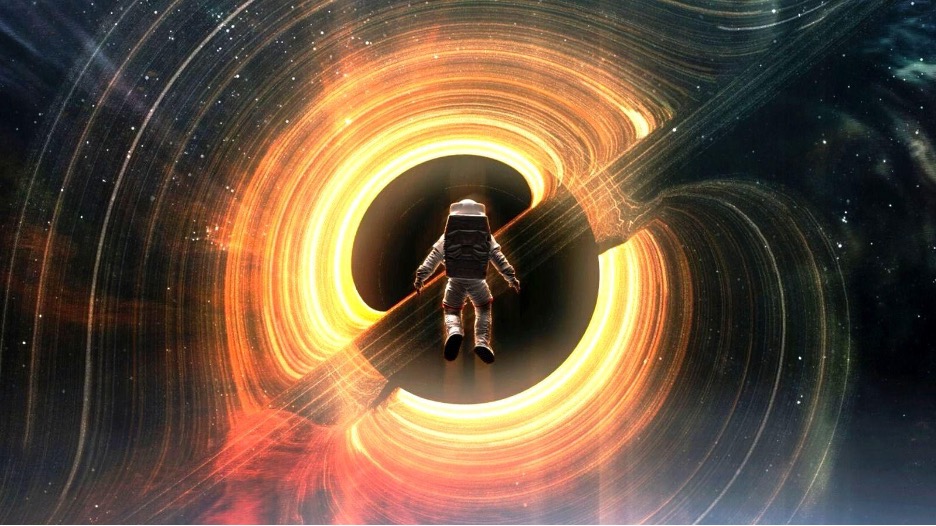
The short answer is that we are likely to die. In more detail — it is not known exactly what will happen to a person in a black hole and how long one will last there. So far, science can only speculate.
Theoretically, just before falling below the event horizon, the traveller might have time to see how all the light of the surrounding stars is distorted and then shrinks into a point behind, which will first turn red, then white, and then blue. This is because of the effect of the hole’s gravity on the lengths of the light waves passing by (this is called “blueshift”).
But what happens inside a black hole? Can you live inside a black hole? No one can tell exactly what will happen beyond the horizon. The problem is that the laws of physics known to us do not work there. So, scientists can only speculate what happens to the matter in a black hole. But most likely, we simply will not reach it.
The accretion disks of black holes emit powerful electromagnetic radiation, so a person will die from this radiation even on approach; or, a disk heated to super temperatures will burn the traveller. But even if we imagine that we have a super unique protective suit, we will still be in for another unpleasant surprise.
As we approach the event horizon, the gravitational force with which the hole acts on a person will also increase. At a certain distance from the hole, the gravity exerted on the legs will become many times greater than the gravity acting on the head. This difference is called “tidal force” or spaghettification. That is, we will begin to stretch and, as a result, will simply be torn apart; so, unfortunately, we will get to the event horizon disassembled into atoms, never having found out what’s inside a black hole.
Final thoughts
Black holes will remain a mystery without a definitive answer for a long time. After all, even if we could cross the event horizon and find out what is inside a black hole, we would not be able to go back and tell about it. At least, that’s what the scientists think. And we can only hope that the time will come when humanity will have the opportunity to confirm or refute this hypothesis.

![Solar Orbiter and Parker Solar Probe Team Up To Finally Solve Sun’s Heating Mystery [UPDATED] Solar Orbiter and Parker Solar Probe Team Up To Finally Solve Sun’s Heating Mystery [UPDATED]](https://orbitaltoday.com/wp-content/uploads/2021/03/Airbus-Solar-Orbiter-1-300x200.jpg)




Thank you for your comment! It will be visible on the site after moderation.